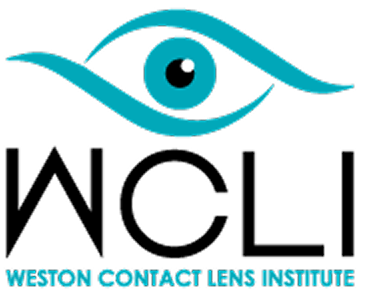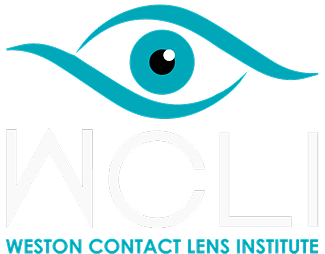Keratoconus is a progressive, genetic eye condition that affects the shape of the cornea. Because it often develops during adolescence, parents need to understand how it can impact their teen’s vision and daily life. This blog serves as a guide to help you recognize the signs of keratoconus, support your child’s needs, and take action. Early intervention can make a lasting difference in protecting your teen’s vision and overall eye health.
What Is Keratoconus?
Keratoconus is a degenerative eye disorder that causes the cornea to thin and bulge outward in a cone shape, resulting in astigmatism and myopia, which can lead to blurry vision. The cause of keratoconus is not yet fully understood. However, we believe that a combination of genetic and environmental factors can weaken the cornea.
Keratoconus usually manifests in both eyes, but it may affect each eye differently. The disease often shows up during puberty and continues to progress throughout adulthood. Without early intervention, keratoconus can progress rapidly, leading to significant corneal thinning and increased corneal bulging. The earlier the condition begins, the higher the risk of vision loss, corneal scarring, and the need for a transplant.
Because the initial visual changes can be subtle, many patients don’t recognize their symptoms as something to worry about. Delayed awareness leads to delayed intervention, allowing the disease to advance further and increasing the risk of complications. Parents must be vigilant about scheduling regular eye exams, particularly if there is a family history of keratoconus.
What Are the Early Signs and Symptoms of Keratoconus?
Awareness of early keratoconus signs will assist parents to notice any sudden visual changes or complaints of visual discomfort. Common symptoms of keratoconus include worsening myopia, frequent changes to eyeglass prescriptions, blurry or distorted vision, increased light sensitivity, glare, and halos around light sources.
Parents may also notice their teenage child rubbing their eyes, which can aggravate keratoconus and contribute to progression. Even mild symptoms warrant a professional eye examination to rule out serious conditions, such as keratoconus. Early detection of keratoconus is essential because the condition can progress rapidly during this developmental phase.
Why Does Early Intervention Matter for Teenagers with Keratoconus?
The greatest benefit of early intervention in keratoconus is the ability to slow or even stop the condition before it causes significant corneal damage. Without timely treatment, keratoconus can worsen, and both glasses and conventional contact lenses may become ineffective in correcting vision. Early diagnosis and management remain the best ways to protect your child’s vision and prevent long-term damage.
One of the most effective ways to stop keratoconus from worsening is a procedure called corneal cross-linking (CXL). This minimally invasive treatment strengthens the collagen fibers within the cornea, helping it maintain its natural shape and stability. When performed early—especially during the teenage years—CXL can halt or dramatically slow disease progression, reducing the likelihood of scarring, thinning, and the need for future corneal transplants.
Treating keratoconus early helps preserve the cornea’s shape and thickness, significantly reducing the risk of needing invasive procedures like corneal transplants later on. When treatment is delayed, the disease can cause irreversible damage and permanent vision loss. For teenagers, maintaining clear, stable vision is essential for success in school, confidence in social situations, and overall independence.
What Treatments Are Available for Teenage Keratoconus Patients?
Keratoconus treatment for teens depends on the severity of the disease and how far it has progressed. In the early stages, glasses and soft contact lenses can improve vision by correcting mild refractive errors. We recommend scleral lenses, a specialized contact lens used in the treatment of various complex eye conditions, particularly when the disease progresses and significant corneal bulging occurs.
Scleral lenses are rigid, gas-permeable contact lenses that are larger than traditional soft lenses. Their larger size allows them to vault over the cornea and rest on the sclera (the white part of the eye). Because the back surface of the lens doesn’t touch the cornea, scleral lenses provide a more comfortable and stable form of vision correction for patients with keratoconus.
How Can Parents Support Teenagers With Keratoconus?
Parents play a vital role in managing keratoconus in their teenagers. To ensure that the condition is being properly managed, you must encourage your child to attend regular eye exams and stick to their treatment plan. Open communication about the disease, vision change, and treatment expectations can help teenagers feel more engaged and involved in their eye care.
Due to discomfort and vision loss, teenagers with keratoconus can struggle with poor mental health. Parents must provide constant reassurance and support throughout the diagnosis and treatment process. A teenager who feels understood and emotionally validated is more likely to adhere to treatment recommendations and avoid behaviors that may worsen their condition and threaten their vision.
Act Now to Protect Your Teenager’s Vision
Keratoconus in teenagers requires attention and proactive care. Early diagnosis through regular eye exams and advanced interventions, such as scleral lenses, can help minimize your teenager’s risk of serious side effects and permanent vision loss later in life.
Keratoconus in teenagers calls for early attention and consistent care. Regular eye exams and timely treatment, such as corneal cross-linking, can help protect your teen’s vision and reduce the risk of long-term damage. Specialty contact lenses can further enhance vision and comfort once the condition has stabilized.

.jpg)




